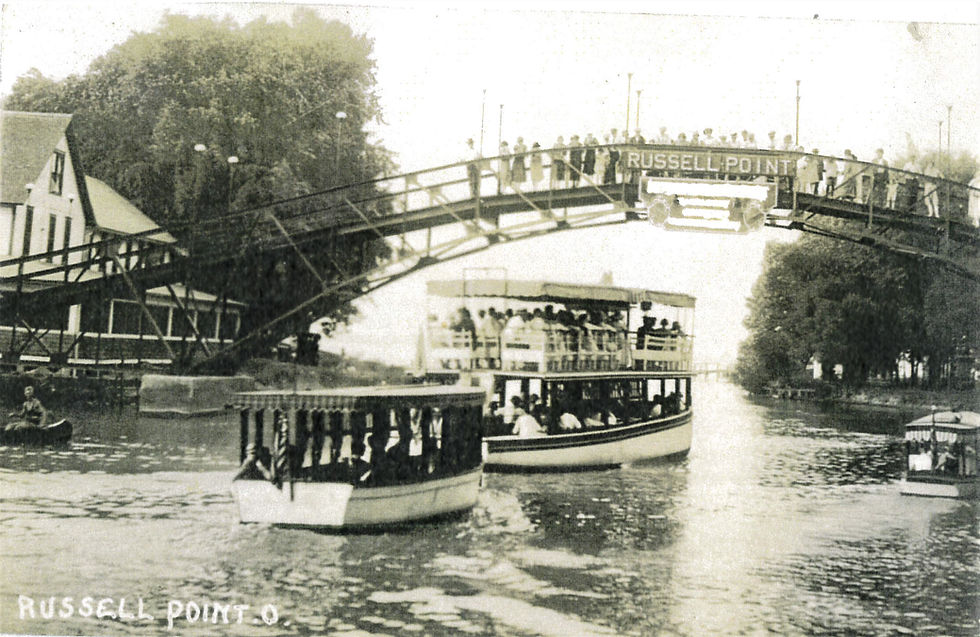Allinger Mill
- Mary Mortimer

- Aug 14
- 3 min read
Dr. James Canby came to the Quincy area from Lebanon, Ohio around 1828. Shortly after he arrived, he built a grist mill on the north side of the Great Miami River. The early settlers in the area helped Canby build a strong dam of brush, logs, and stones for the mill race.
In 1830, the village of Quincy was laid out on the south side of the Great Miami River by James Baldwin and Manlove Chambers. The village was named in honor of John Quincy Adams, sixth President of the United States. Once Quincy was established, and more people moved to the area, the need for a grist mill increased.
The Canby Mill changed hands several times and by 1860, Joseph Eicher was the owner and operator. Eicher sold the mill and a nearby sawmill to Jacob Allinger in 1871. Allinger immigrated to America from Germany in 1846, settling first in Shelby County where he worked at the Maxwell Mill and learned the milling process. Allinger operated the former Canby Mill until a larger mill was needed. In 1882, he removed the sawmill and constructed a new three-story flour mill on the site. The buhrstone that was used at the Canby mill to grind grain was placed at the doorstep.
Jacob Allinger passed away in 1903 and his three sons took over management of the mill. Allinger’s sons, John, and George, later moved to Sidney where they managed the Miami Valley Grain Co. His third son, Benjamin, was then the sole operator of the mill.
In 1904, John Allinger purchased the land where Riverside Park had once stood. He planned to convert the property into a poultry farm. Riverside Park was a water recreation park on the Great Miami River that was in operation from 1895 to 1903. The park was located on former Allinger property.
Benjamin Allinger’s son, Ray, began working at the mill in 1910 and another son, Herman, joined his father and brother at the mill in 1919. Benjamin Allinger passed away in 1933 and his two sons took over management of the mill and enlarged it.
The race for the Allinger mill had a fall of just six feet, but with turbine wheels there was enough power to grind about three barrels per hour of “Golden Rule” flour. Various specialties were made and sold at the mill, including pancake and buckwheat flour, cornmeal, and gingerbread mix. The mill’s capacity was seventy-five barrels of flour every 24 hours.
Schoolchildren often toured the Allinger Mill and were shown the different processes wheat goes through to make flour. Each student was given a small sack of buckwheat flour before they left.
The Allinger Mill enjoyed much success over the years. For the World War II effort, they reported up to December 1, 1943, they had manufactured an estimated two million pounds of food for human consumption and approximately 1,750,000 pounds of stock feed and mash.
On December 28, 1943, a devastating fire destroyed the Allinger Mill. Along with the mill structure, several thousand bushels of grain, the bulk of the flour milling machinery, feed manufacturing equipment that included a diesel power unit, hammer, grinder, feed mixer, office equipment and all their records were lost. Only one filing cabinet and a set of scales were saved from the burning structure. The fire started in the stockroom and spread quickly, and the intense heat prevented firefighters from getting too close. Firefighters from Quincy, DeGraff, Sidney and Bellefontaine pumped water from the nearby mill race, but it was not enough to stifle the raging fire.
The Allinger family decided against rebuilding the mill due to the wartime shortage of materials. The cherished landmark ran by three generations of the Allinger family served many area residents for over 60 years. Losing the Allinger Mill was a great loss to the community.

























Comments